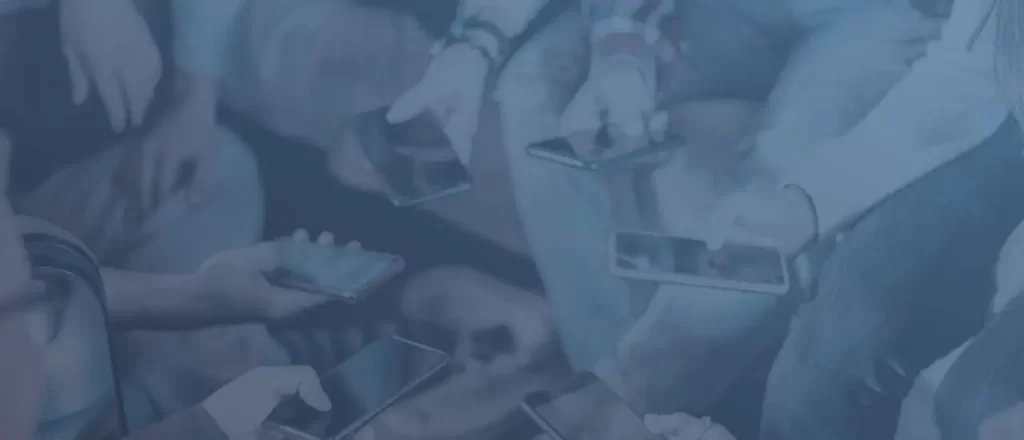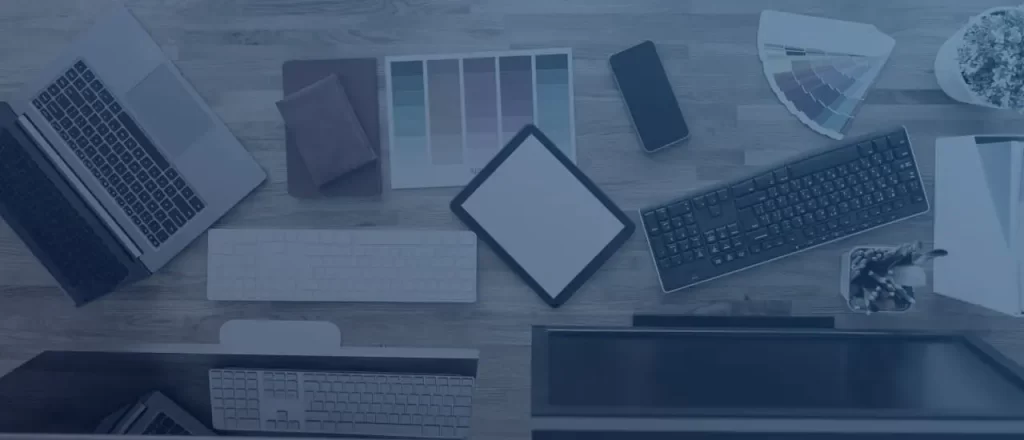Why UX Design Is Your Best Marketing Strategy
If you want your service to have higher chances for success – invest more time and resources into its custom scripting and design
5 May, 2023
Why UX Design Is Your Best Marketing Strategy
Design matters. It affects promotion and makes the service more convenient.
The purpose of any service, no matter whether it’s a music or video platform, or even a client bank, is to simplify its users’ lives and solve some specific problems, as well as, of course, bring profit to the owner. The more convenient and useful the service is, the bigger audience it has. The question of convenience can be easily solved with the design, which improves behavioral factors and reduces the promotion expenses.
The impact of design on promoting the service is far greater than many people might think. All types of Internet resources (online stores, portals, blogs, services) with a harmonious color palette, proper fonts and graphic elements are perceived as more reliable by the visitors.
If you want your service to have higher chances for success – invest more time and resources into its custom scripting and design.
However, make sure you don’t overdo it with creativity. Extremely bright and extraordinary designs fit very few areas and companies, so they can scare away some potential users!
Why is this happening?
- Users don’t understand how to achieve the result that is so desired.
- The design doesn`t correspond to the user’s ideas about the company.
- Complex images and media are normally loaded slowly. Users won’t wait!
How to get the most out of your design?
Firstly, we analyze the target audience. Target audience analysis is a key factor in determining the design’s future. It is the target audience that the service is most importantly adapted to.
Target audience determines:
- a) color palette
- b) accent placement
- c) future service structure
Color palette
Don’t forget about the subject, associations and expectations. This is something you should stick to as well.
- Subject – Proper nutrition services are used by the young people in most cases, that is why it is recommended to choose bright and light colors. Older people tend to use legal services more, for this reason such services should have subtle natural and calm colors.
- Associations – For example, a baby products service cannot be black. Topics connected with children are associated with bright, eye-catching pictures. Keep that in mind and you will not have the need to come up with something extraordinary.
- Expectations – When imagining a company, users, in most cases, have certain expectations. For example, when users visit a law firm website, they don’t expect to see bright doodles and a lot of entertaining content. This can play both a positive and a negative role for the company.
“In any case, it is important not to overload the screen, but to place accents correctly. Often 2-3 colors are used so that the details do not outbid each other.” Designer of our company
Do not forget about the device which the service will be accessed on. The service should be convenient in operation both with the help of a mouse on a large monitor, as well as using fingertips on a small display of a phone.
Design is primarily about being user-friendly. For this reason, user flows with prioritization are used, and the more complex functionality it has, the more work for the designer it brings. Arranging objects correctly, choosing colors and fonts, highlighting accents – all this affects the promotion of the site from a marketing point of view.
Returning users
The user’s first encounter with a particular design plays the most important role. Usually, the first page is exactly where all the information about the service is provided. Screenshots, a description of what is useful and how it works, an invitation to use it – it is also here. If the design is poorly made and the user is left confused – they leave. To make the user return, you will have to spend twice as much money as it was originally intended. Accordingly, the design reduces each customer’s cost and also the customer’s return cost. This saves budget. Let’s take a closer look:
- First stage. In fact, we want the users to understand everything easily and use the service with pleasure. We allocate funds for this, for example, $100,000. If the design is lousy, then 100 people will use the product for this money, if the design is decent, then 10,000 people will use it. In total, one user’s price will not be $1,000, but $10 instead.
- Second stage. The users sign in to a service with a lot of functionality, but they do not understand anything. Neither how to use it, nor where to find the function wanted. It’s like going to the hospital and not understanding how to make an appointment with a doctor.
As a result, the user either leaves, and it turns out that the money spent on attracting them is simply lost, or remains because they really need the service and there are no alternatives. Gritting their teeth, they use it, and when asked by other potential customers about the service quality and personal experience, they say that the service is very inconvenient, and these people refuse to use the service for as long as possible. All this leads to losing quite a number of potential customers.
When the design is nicely done, the client can easily use the service, reach the desired results and, when asked about the experience, enthusiastically recommend it. In this way new customers are attracted, in fact, for free. As a result, we reduce the cost of attracting new customers even more.

When holidays come, a person logs in to the service and sees some festive updates that are fancy, but, at the same time, do not interfere with the customer’s user experience at all. This is the second part of stage 2, which encourages the user to think again about the service, so it becomes more catchy and increases engagement. When a person uses something for a long time, they begin to take the service for granted, and it needs to be prevented. For example, the way Google does. Google service often changes pictures on its front page and places mini-games for more interaction. That is why Google is the top 1 search engine in the world. By means of such regular mini-interactions, the company keeps people interested. Google spends hundreds of thousands of dollars on all of these features in a “game form” and logo changes.
Further, the client decides to expand the functionality of the service, and that’s when stage 3 is introduced.
New buttons, new functions are added to the service, while users are accustomed to using the old version. Now, after logging in to a new version, the users get confused again. And the bigger the changes, the more discontent they express over them. Now the service’s profit is decreasing, because instead of clicking the “pay button”, the users are looking for these buttons, or even looking for other services that will replace this one, which has now become so confusing. Therefore, the design’s task is to integrate new buttons and functions in such a way that it causes minimal confusion among the user. When doing so, the user becomes happy that new useful functions have been added to the service and that they can be reached out to with great pleasure and without any sort of disarray.
As a bonus, this stage saves development costs, since there is no need to make constant edits and relentlessly move buttons, guessing how to place them conveniently.

What should be the starting point?
It is worth starting by setting the goal. Our goal is to make the majority of users come back to us again and again.To do this, you need to create not only a beautiful design, but also an easy-to-use one, so that the user can achieve the goal in a minimum number of clicks. For example, ordering food. Open the pizza restaurant page. Menu – place an order – phone number, name, address – order. No unnecessary buttons, everything is in its usual places and is totally understandable. Clear and clean navigation. It is important.
People don’t always like to read, so some information can be placed in a picture. However, it is worth considering its size and quality, and how much time it takes
to be loaded. Pictures and animations should only be used where appropriate. Don’t overload the site.
Design is a tool for using a product with both a PC and a phone. Usability should be the same, regardless of the device used. To do this, designers need to adapt their projects for different resolutions, so that nothing affects its operability.
Why exactly these colors?
Design is also a great marketing tool that should inspire customers’ trust more than your competitors. In order to gain trust, there must be a good choice of fonts, colors and, of course, simple usability. They are all small pieces of the same puzzle that should ideally appeal to each other. Only in this case will we see the desired final picture.
A designer is a person whom you have entrusted your project to. A person with experience. Accordingly, based on the designer’s experience and your wishes, they create the color scheme of the future service.
There are many influencing factors:
- a) target audience
- b) subject
- c) your wishes (corporate style)
- d) associations of potential users
- e) direct competitors
Think these points through carefully, trust the designer and hitting the target will be as accurate as possible.
How to check if it is working?
Design helps to ensure that SEO does not spoil all of the above. To check if the design meets the expectations, a focus group (from your target audience) should be gathered, and their feedback will make it clear what should be added or removed. They will accurately tell you how to improve the service for your users.
Let’s summarize the results:
- Play with colors and font sizes. Consider the part of the day when the service will be used.
- Keep an eye on the background and font “whole picture”. Don’t make the contrast too edgy.
- Check how the service looks in all browsers and different screen resolutions.
- Minimize distractions. Don’t get carried away with the number of lines in the menu! Limit user choices.
All of the above stages affect the promotion of the product to the masses, and this is “promotion” itself. Actually, get your ideas together and entrust them to our experienced designers. These people will do everything simply but brilliantly. Drop us a line here to discuss your brilliant idea.
Let's work together to make your project a success
Contact usLast News
Thank you!
We’ve received your contact request and will contact you soon
Something went wrong
We couldn’t receive your contact request. Please try again later.